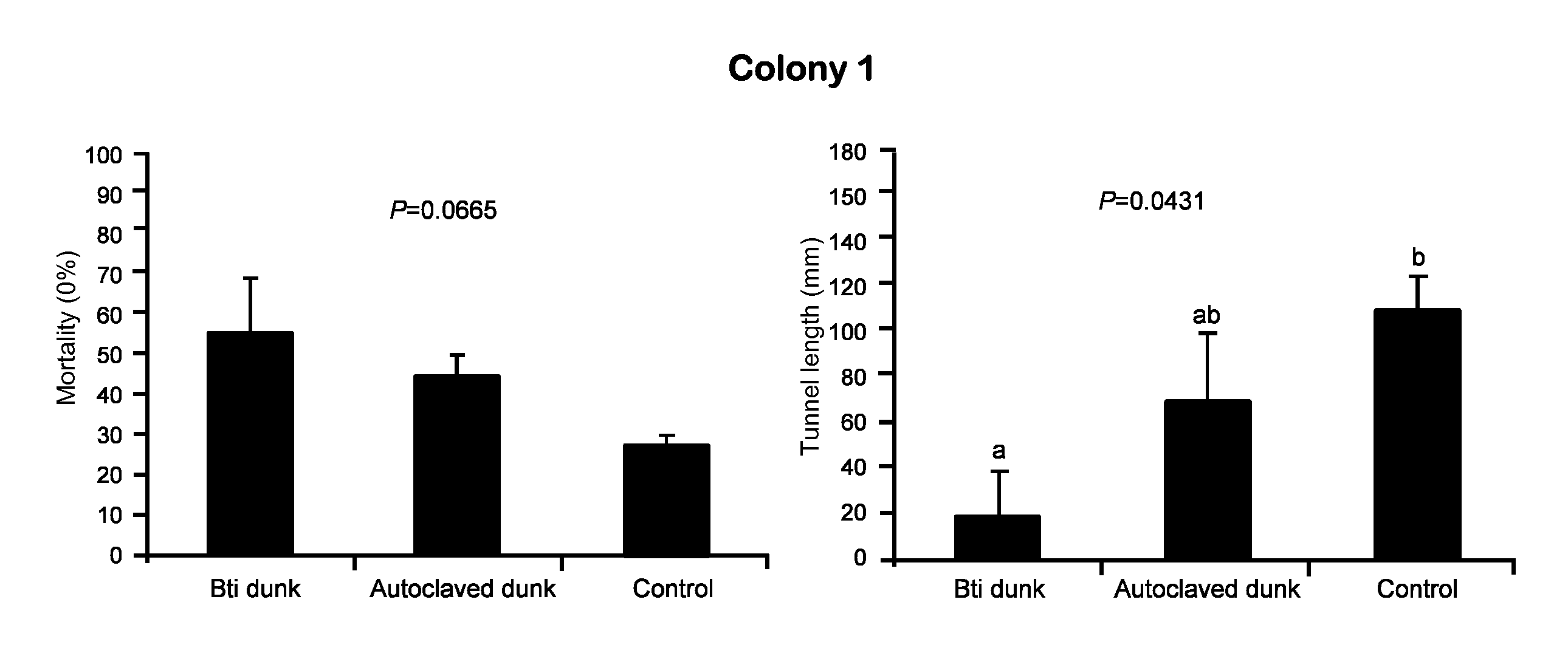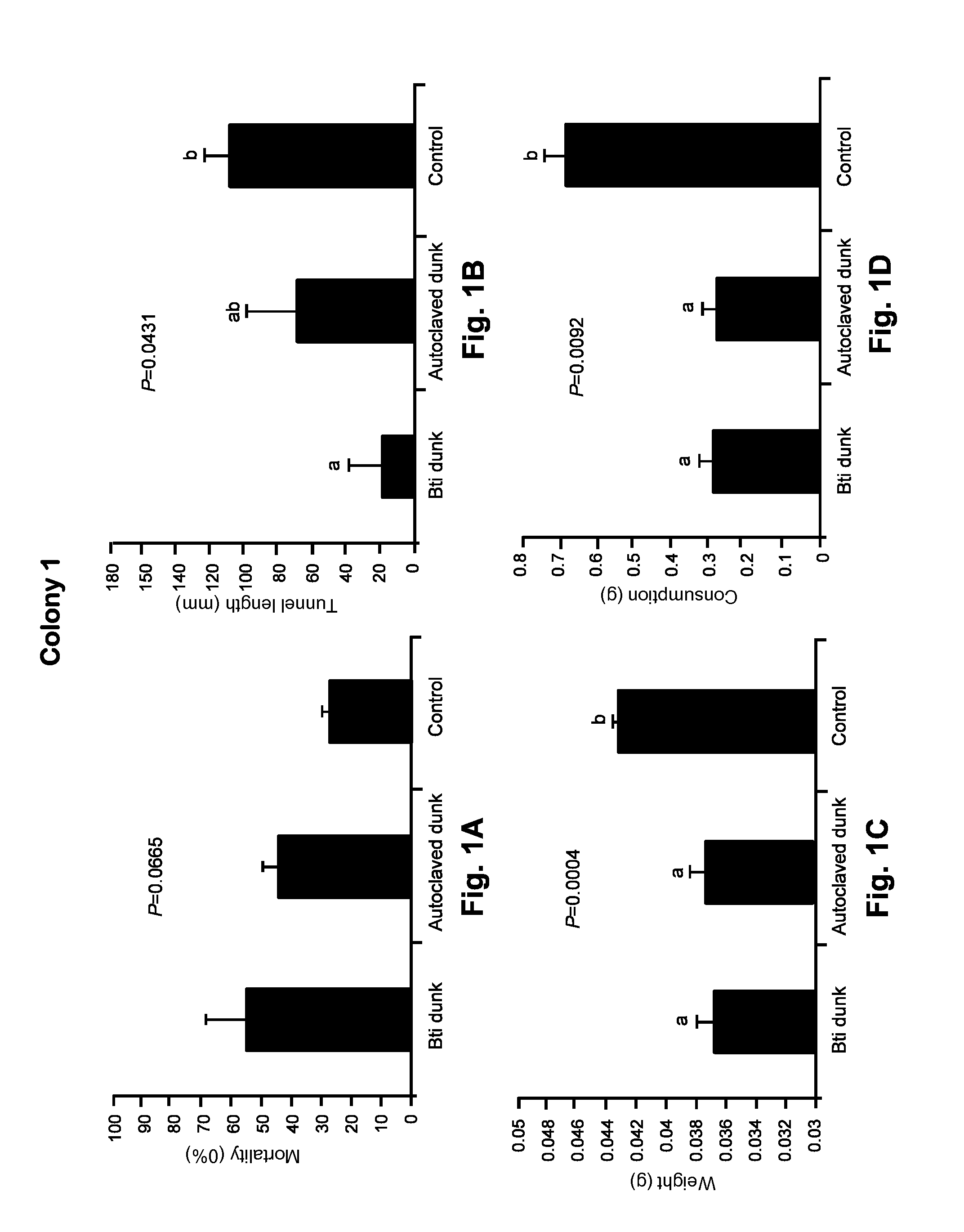Control of Subterranean Termites
- Summary
- Abstract
- Description
- Claims
- Application Information
AI Technical Summary
Benefits of technology
Problems solved by technology
Method used
Image
Examples
example 2
Termite Pathogenic Bacteria
[0025]P. aeruginosa and S. marcescens were isolated from C. formosanus and identified by 16S rRNA sequencing. B. thuringiensis subspecies israelensis (BO was isolated from Summit® Mosquito Dunks® and confirmed by colony growth characteristics and Schaeffer-Fulton staining. The three bacterial species were streaked on Luria-Bertani (LB) agar plates and kept at 4° C. for less than one month before setting the bioassay.
example 3
Chitin Synthesis Inhibitor
[0026]Lufenuron disrupts the formation of cuticle when termites molt, and this disruption can kill termites at sufficiently high levels of lufenuron. A lethal dose is usually about 1500 ppm or higher, and mortality occurs after about a month. The dose and time are similar to those known for other chitin inhibitors / growth regulators, including but not limited to, hexaflumuron, noviflumuron, diflubenzuron, and novaluron, which have been used for several years against termites.
example 4
Termite Pre-Feeding Conditions
[0027]Twelve filter paper discs (9 cm, Ahlstrom® grade 617) were individually weighed. Lufenuron (Sigma-Aldrich Co. LLC, St. Louis, Mo.) was dissolved in acetone to make a 1000 ppm solution, and 1 ml of this solution was pipetted onto each of the filter papers. The same amount of acetone only was added to another set of 12 filter paper discs (non-treated controls). The filter papers were then placed under a fume hood for about 48 hours to evaporate the acetone completely. The treated and non-treated filter papers were placed in separate Petri dishes (150 by 15 mm, Fisherbrand®), such that each of 4 dishes contained 6 filter paper discs (2.8±0.01 g). The filter papers in each dish were moistened with 8 ml sterile distilled water. One thousand termites from a colony (colony 1: 90% workers and 10% soldiers; colony 2: 100% workers, according to their collected colony structures) were released in a dish, such that Colony 1 termites and Colony 2 termites were...
PUM
 Login to View More
Login to View More Abstract
Description
Claims
Application Information
 Login to View More
Login to View More - R&D
- Intellectual Property
- Life Sciences
- Materials
- Tech Scout
- Unparalleled Data Quality
- Higher Quality Content
- 60% Fewer Hallucinations
Browse by: Latest US Patents, China's latest patents, Technical Efficacy Thesaurus, Application Domain, Technology Topic, Popular Technical Reports.
© 2025 PatSnap. All rights reserved.Legal|Privacy policy|Modern Slavery Act Transparency Statement|Sitemap|About US| Contact US: help@patsnap.com



